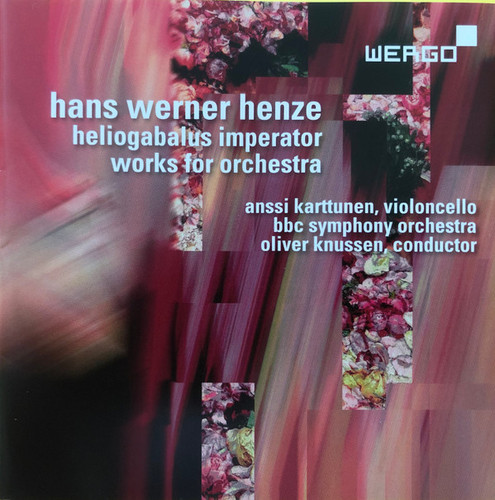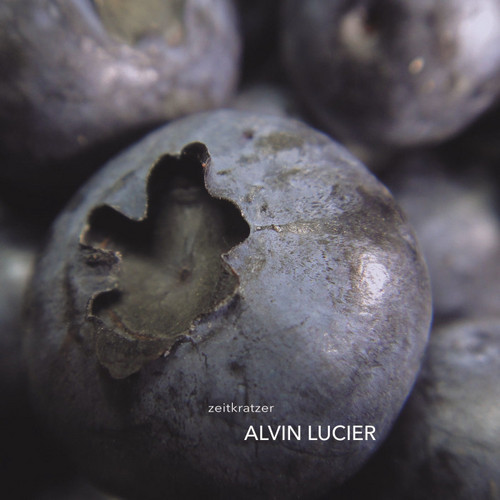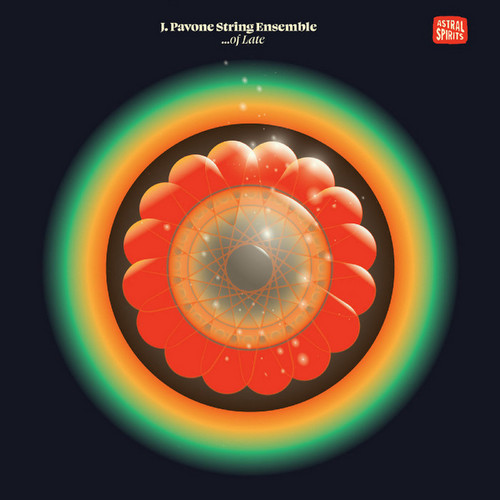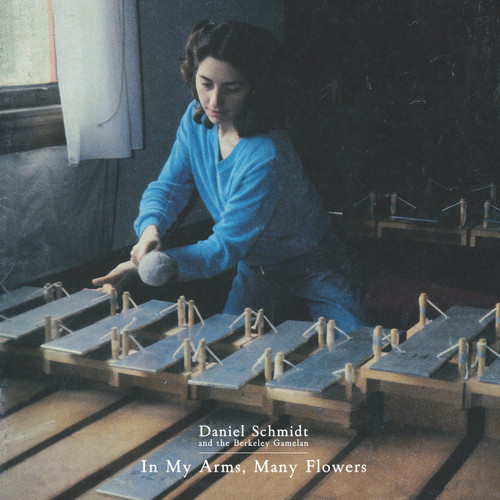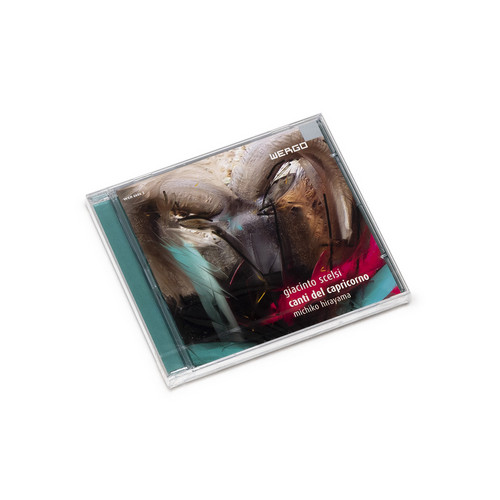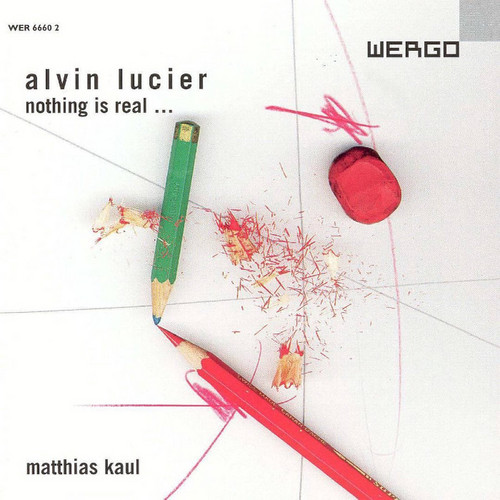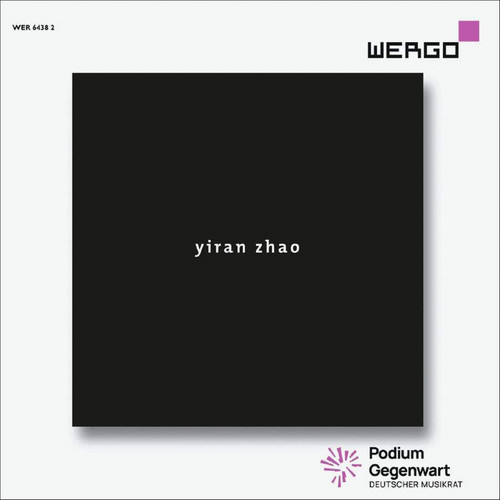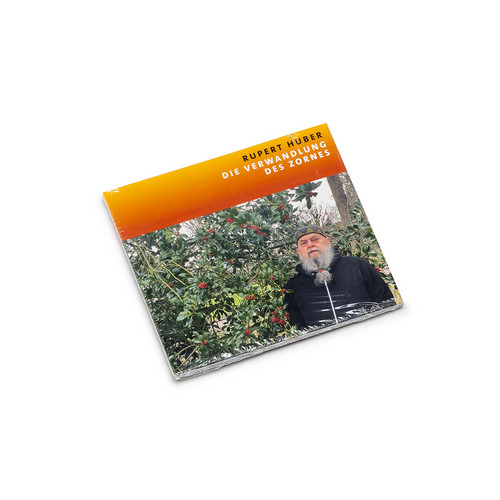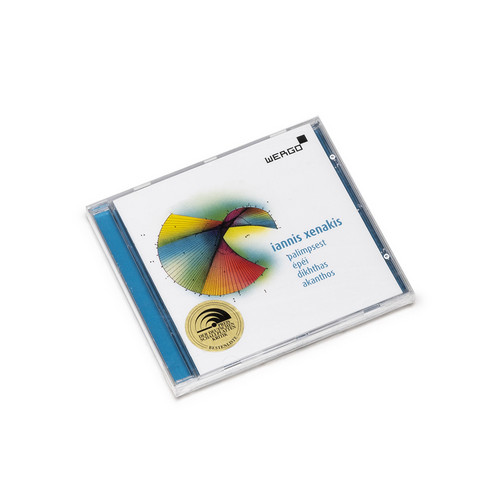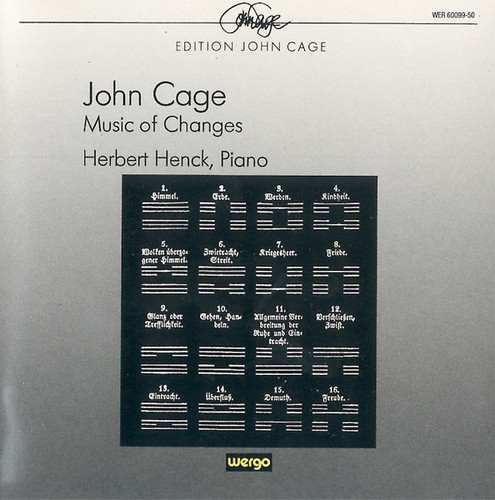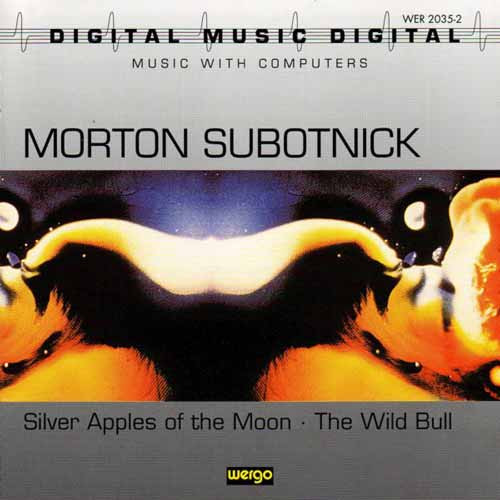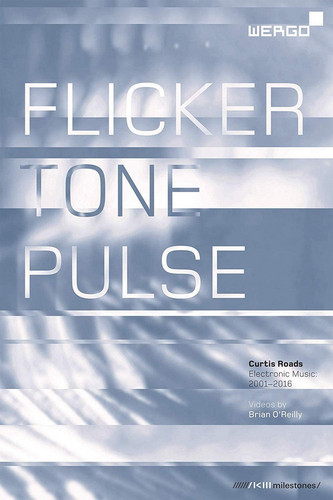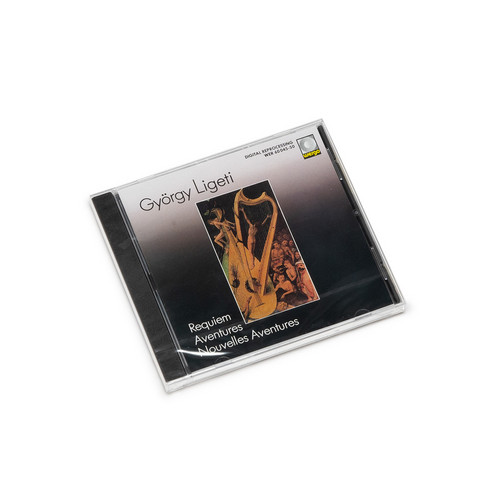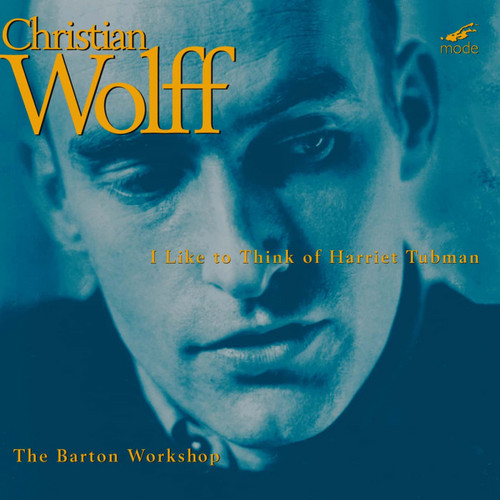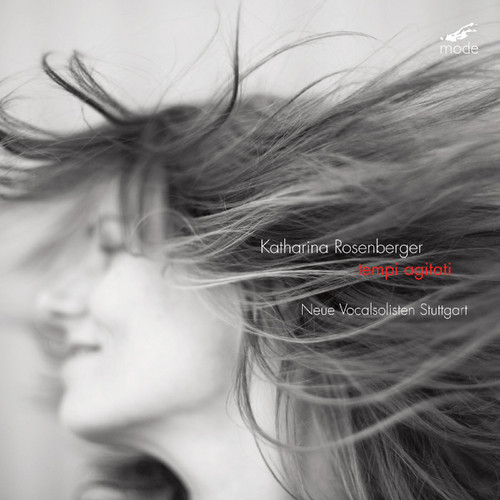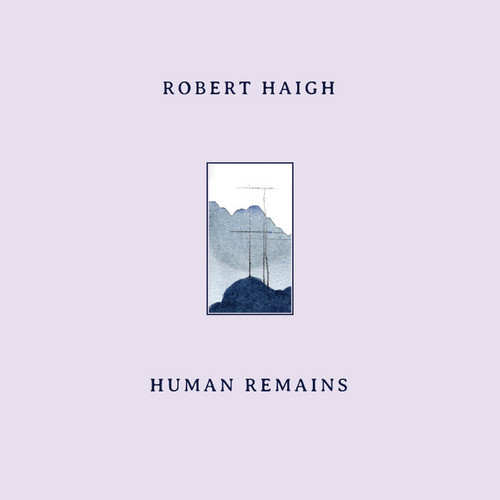Heliogabalus Imperator / Works For Orchestra
*2022 stock* The relationship between Hans Werner Henze and Oliver Knussen was one of great mutual respect. The German composer admired the British conductor and composer for electrifying performances of Henze’s own and other composers’ works. Knussen was an untiring and enthusiastic champion of his friend Henze’s music. The recordings collected here display Knussen’s deep understanding of Henze’s music. Knussen conducts the BBC Symphony Orchestra in sensitive and meticulous performances of comp…
Alvin Lucier
Alvin Lucier (1931 – 2021) was one of the most influential American minimalists. Some call him "sound physician" as his compositions are often based on acoustic research settings. His pieces tend to turn inside-out the properties of space and instruments: poems based on acoustic settings! zeitkratzer worked with the composer in Dijon, France in 2008, and presented his music in various places. These recordings have been realized at Philharmonie Luxembourg that turned out to be the ideal space for…
...Of Late
Astral Spirits presents ...of Late by Jessica Pavone String Ensemble.
Jessica Pavone - composer / viola; voice on track 3Aimée Niemann - violin; voice on track 3Abby Swidler - violin on tracks 1,3,4; viola on tracks 2&5; voice on track 3
Nam June's Spirit Was Speaking To Me
A spellbinding tribute from one multi-faceted artist to another. New York-based artist Aki Onda (b. 1967) conjured a transduction to the Korean multi-media pioneer Nam June Paik (1932-2006).
In My Arms, Many Flowers
*New CD edition of sold out LP/CD* Recital is proud to publish the first album of American Gamelan composer Daniel Schmidt (b. 1942). Schmidt, who emerged in the Bay Area music scene in the 1970s, wove the threads of traditional Eastern Gamelan music together with American Minimalism (repetitive music). Schmidt was (and is still) a prime figure in the development of American Gamelan music – studying and collaborating with Lou Harrison, Jody Diamond, and Paul Dresher. He currently is a teacher a…
Canti Del Capricorno
*2022 stock* Michiko Hirayama inspired Giacinto Scelsi to write his twenty-part cycle "Canti del Capricorno" between 1962 and 1972. To this day the Japanese singer (b. 1923) is a unique performer of this spiritual yet energy-filled work for solo voice, with instrumental accompaniment for certain songs: Scelsi’s notes in his own hand in the score; that is her treasure, when she comes to Ulm in May 2006 to give a concert in the series neue musik im stadthaus. Michiko Hirayama is a vocal power stat…
Nothing Is Real ...
*2022 stock* The focus of the pieces by Alvin Lucier on this CD is on the phenomena of resonance – sympathetic vibration – in many variations. “Time and again I find myself having to pare away any musical gestures in a work in order to uncover the true idea in a piece,” says Alvin Lucier.The composer knows which ideas he wants to liberate. But the process of causing the environment to resound is always a collaborative, interactive project. It needs someone who is creatively engaged, even obsesse…
s/t
Yiran Zhao makes use not only of musical elements but also of objects, bodies, movements and light-sources as compositional material. Many of her pieces inhabit the various boundary states between instrumental music, performance, sound-installation, and video-art. Leonie Reineke describes the composer in the CD-booklet as a “prudent researcher“, who encounters the sonic cosmos of her environment with great earnestness, and comes microscopically close to things.
In the composition “Piep“ she focu…
Die Verwandlung des Zornes
*In process of stocking* The Zooming is implemented musically; it captures places on the globe that lie in a constantly narrowing field of view around the Kollegienkirche in Salzburg, the site of the piece's premiere. In the north and south, the latitudes represent the boundaries at 90° each, in the east and west, the longitudes at 180° each. The places where the four wind instruments play in the Kollegienkirche each lie on an imaginary line projected in the four different cardinal directions, n…
Palimpsest | Épéi | Dikhthas | Akanthos
*2022 stock* 'This collection of ensemble works, six altogether, ranges across the last two decades of Iannis Xenakis's life. It includes the last two pieces he composed, Zythos, for trombone and six marimbas, and O-Mega, for percussion and ensemble, both written in 1997, four years before his death. They are striking, small-scale examples of the bareness and drastic compression of his late style, but the finest music here is a bit earlier. In Échange, from 1989, a bass clarinet painstakingly un…
Music Of Changes
*2022 stock* It's over 70 years since John Cage wrote his pivotal Music of Changes, and it's beginning to show its age. It feels very much of its time, with its uncompromising adherence to the 64 hexagrams of I-Ching, the Chinese book of changes, determining the direction of the piece and its use of sudden, percussive attacks on the strings or the body of the instrument. But for all that there is no denying the extreme stamina and concentration required of the performer, and here Herbert Henck e…
Four Organs / Phase Patterns / Pendulum Music
Three early compositions (1968-1970) by Steve Reich, one of the most prolific exponents of minimal music, in stunning interpretations by the critically acclaimed Ensemble Avantgarde. Available on vinyl (180gr, gatefold sleeve incl. download code) for the first time ever!
Silver Apples of the Moon / The Wild Bull
Silver Apples of the Moon' is without a doubt the best known work from influential composer and electronic music pioneer Morton Subotnick. It was originally commissioned by Nonesuch records back in 1967, when electronic music was more of a series of ideas than a recognised art form, and since then it has achieved well deserved classic status, influencing so much that would come after it is impossible to conceive. Subotnick's instrument of choice was the Buchla modular synthesizer, a gigantic pat…
Flicker Tone Pulse (Electronic Music 2001-2016)
A prolific composer, performer, and author, Curtis Roads says he “pursues research in the interdisciplinary territory spanning music and technology.” He was Editor and Associate Editor of Computer Music Journal (The MIT Press) from 1978 to 2000, co-founded the International Computer Music Association in 1979, and was a pioneer in the development of granular synthesis. Roads developed the Creatophone, a system for spatial projection of sound in concert, as well as the Creatovox, an expressive new…
Requiem / Aventures / Nouvelles Aventures
*2022 stock* György Ligeti's "Requiem" for soprano, mezzo-soprano, two mixed choirs and orchestra is one of his most impressive compositions - especially, when directed by Michael Gielen - and at the same time "the" requiem of the 20th century: Sound which is chromatically layered moves gradually from the lower registers to the higher, thus changing from mourning sounds into the promise of the eternal light. In the Kyrie the polyphonic net which was previously static begins to move gently. It wa…
Volume 1: Electronic Works
*2022 stock* Although this might be labelled 'Volume 1', this large collection of Morton Subotnick's work (featuring three of his pieces - 'Touch', 'A Sky of Cloudless Sulphur' and 'Gestures') actually showcases some of his most recent compositions. The pioneering electronic composer shot into the public eye with his very well known album 'Silver Apples of the Moon', but his work didn't end there and here we get 'Touch' which was composed just after 'The Wild Bull' in 1969 set next to 'A Sky of …
I Like To Think Of Harriet Tubman
*2022 stock* 'A true Leninist would argue that art in a smoothly running socialist state would become redundant and disappear, though while waiting for such a perfect society to come about, we have an idea of what socialist literature, painting, sculpture and cinema are like. But what does socialist music sound like? Luigi Nono? Eisler? Robert Wyatt? The Ex? Well, all four. and you may add Christian Wolff to the list. Like fellow experimental composers Cornelius Cardew and Frederic Rzewski, Wolf…
Tempi Agitati
On April 6, 1327, a 22-year-old Italian poet named Francesco Petrarca caught a glimpse of a young woman, Laura, in a church in Avignon. He later reported that “living sparks issued from two lovely eyes”. Those sparks enflamed Petrarch such that he spent the rest of his illustrious career coming to terms with them. Madrigals were developed in the 16th century by Adrian Willaert and Cipriano de Rore, which took Petrarch’s agonized images as justification for violating the rules that had guided mus…
Human Remains
*In process of stocking* Human Remains follows Creatures of the Deep and Black Sarabande as the final installment of a trilogy of piano based recordings by Robert Haigh for Unseen Worlds. The trilogy marks the end of the late era of solo albums by Haigh before he steps away from music production. The title, Human Remains, was initially based on a painting of the same name by Haigh that is suggestive of an ancient structure resolute in the wake of overwhelming forces. As a metaphor for our curren…
Avalanche
*In process of stocking* In nineteen movements of varying lengths and moods, Denis Doufour’s monumental piano piece “Avalanche” invites us on a voyage across the infinite variation of the forms taken by snow, and the rich vocabulary established by the Innuits for it since their arrival on Greenland, the continent of ice. At work in this piece is a transposition, inspired by morphologies, of a certain kind of energy onto the relationships between the physical and musical realms. Thanks to his prac…
